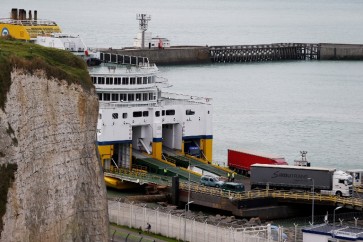Popular Reads
Top Results
Can't find what you're looking for?
View all search resultsPopular Reads
Top Results
Can't find what you're looking for?
View all search resultsThe political demography of conflicts in Papua
Demography is rearing its ugly head, and as a result, political development in Papua has become convoluted
Change text size
Gift Premium Articles
to Anyone
D
emography is rearing its ugly head, and as a result, political development in Papua has become convoluted. This issue was a major topic during the recent seminar on Papua organized by the Research Center of Politics at the Indonesian Institute of Sciences (LIPI).
The convolution of demography and politics were exposed in at least two cases ' the increasing number of non-Papuans and the demographic manipulation in the creation of new districts. What is worrying is the contribution of a political demographic nexus to the increasing political and communal conflicts in Papua.
The perception that in-migration to Papua has resulted in the marginalization of the indigenous population has been around since the early 1980s, when Soeharto's New Order government accelerated the relocation of people from Java and Bali under the transmigration program to Papua. The transmigration policy was criticized for endangering both the local population and the environment as new settlements destroyed the surrounding tropical forests. The transmigration program had practically ceased in the early 1990s as the financial capacity of the central government began to shrink. Yet, voluntary migration cannot be stopped, as in-migration continues to be driven by the process of equalizing economic and human resource gaps between different areas.
The last two decades of the voluntary movement from Java to other islands is perhaps a major contribution to rapid social transformation in this archipelago. As the result of 2010 population census showed, the in-migration rate to Papua and West Papua province was the highest in Indonesia. While the actual number of people who migrate to Papua might not be as high as the number of migrants who move to, say, Riau province. However, given the low population in Papua, the movement consequently has higher social, economic and political impacts than in Riau.
Since the political problems in former East Timor and Aceh have been resolved, Papua is now the most politically troubled place in the country. Bitter decolonization in the early 1960s and its aftermath were followed by grievances resulting from structural injustices committed by the Indonesian government in Papua. Papuans continued to be restless while any attempts to resolve the problem had different responses from different groups of Papuans. The fragmentation of Papuan society, which stems from the enormous ethnic heterogeneity, constitutes the underlying factor that significantly contributed to the divisive nature of political leadership in Papua.
The decentralization policy, the product of the post-Soeharto regimes, granted regional autonomy to regency and municipal level governments. An initial idea that autonomy should be given to the province was totally rejected by the military. The response by the local elites on the locus of regional autonomy at the regency level, however, is unprecedented. Expectations of fund disbursements and the opportunity to hold local power have driven the rapid creation of district governments all over the place, particularly outside Java.
In the case of Papua, apart from the establishment of special autonomy, the decision to create the second province, West Papua, was originally perceived as part of Jakarta's rule and divide policy, to weaken the potential separatist movement in Papua. Yet, as the local elites saw the economic and political benefits, the drive to create new regencies rapidly accelerated. The manipulation of demographic statistics to meet the requirements for creating new districts is therefore, uncontrollable.
The role of local political elites both in the issue of the impact of in-migration and demographic manipulation in the creation of new districts is indisputable. In the case of in-migration issues, violence usually occurs in the form of sporadic attacks by Papuan militia groups against the migrant communities.
In the case of demographic manipulation in the creation of new regencies, a study by Sidney Jones from the Institute for Policy Analysis of Conflicts (IPAC) shows that the direct link with the political mobilization by the local elites is driven by the need to create new regencies, and the political and communal violence in several highland districts. Jones, who presented her case at the LIPI seminar, argued that the conflicts among Papuan elites in the creation of new regencies indicated that the idea of divide-and-rule from Jakarta was no longer necessary as Papuans had now divided themselves.
The problems and the dilemmas of initiating a dialogue to find a peaceful solution for the Papuan conflicts are separate from the extreme prejudice from Jakarta toward the Papuans. As Muridan Widjojo the leader of the LIPI research group noted in the seminar, the issues were also clearly based on the fact that no single
authority represented the Papuans. Muridan strongly argued that the strategy that must be adopted should not simply mirror the way Jakarta resolved the Aceh conflict. Muridan, who also leads Jaringan Damai Papua (Papua Peace Network) with Father Neles Tebay, reminded us all that we had to face a long and tedious process, just to lay the initial foundations for a dialogue to resolve the conflicts in Papua.
________________
The writer is a researcher at the Research Center for Society and Culture, LIPI.










